

This post is part of the 2014 What a Character! blogathon. To see more, click graphic (above).?
?Acting is a ridiculous profession unless it is part of your very soul.? ??Peter Lorre
Even people who have never seen Peter Lorre in a movie know his nasal, dreamy voice and instantly recognizable bug-eyed face, a caricaturist?s dream, from cartoons and voice mimicry that continue to appear as the years go by?two vividly etched on my memory are the apoplectic cartoon chihuahua Ren (of?Ren and Stimpy), who got his bulging eyes and his voice from Lorre, as did The Firesign Theatre?s character Rocky Rococo.
Lorre was born Laszlo Loewenstein in 1904 in Hungary and died in Los Angeles not quite 60 years and 79 films (and a lot of radio and TV) later. His phenomenal screen debut came via?Fritz Lang?s?M(1931), playing the child molester and murderer Hans Beckert, and the 27-year-old Lorre?s singular appearance and indelible performance burned him into the minds of both moviegoers and filmmakers as a monster capable of the most unspeakable horrors. This, along with his long-term morphine addiction, appear to have been his central tragedies. His huge success in?M?almost made inevitable the typecasting that kept Lorre, one of the finest actors of the century, from playing more than a fraction of the multitudes he contained. His last appearance on film was in Jerry Lewis?s?The Patsy, a satire of Hollywood phoniness that Lorre, with his cordial hatred of the studio bosses whose failure of imagination kept him from the roles he fought so hard for, might well have approved. In between there were great films, good films, and stinkers, and while I cannot claim to have seen anywhere near all of them, I do feel safe in saying that he always added ?something worthwhile?Lorre made no film worse, and a great many were better or even succeeded because of his contribution.
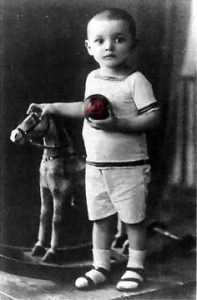
Lorre was born Laszlo Loewenstein in 1904 in Hungary and died in Los Angeles not quite 60 years and 79 films (and a lot of radio and TV) later. His phenomenal screen debut came via?Fritz Lang?s?M(1931), playing the child molester and murderer Hans Beckert, and the 27-year-old Lorre?s singular appearance and indelible performance burned him into the minds of both moviegoers and filmmakers as a monster capable of the most unspeakable horrors. This, along with his long-term morphine addiction, appear to have been his central tragedies. His huge success in?M?almost made inevitable the typecasting that kept Lorre, one of the finest actors of the century, from playing more than a fraction of the multitudes he contained. His last appearance on film was in Jerry Lewis?s?The Patsy, a satire of Hollywood phoniness that Lorre, with his cordial hatred of the studio bosses whose failure of imagination kept him from the roles he fought so hard for, might well have approved. In between there were great films, good films, and stinkers, and while I cannot claim to have seen anywhere near all of them, I do feel safe in saying that he always added ?something worthwhile?Lorre made no film worse, and a great many were better or even succeeded because of his contribution.
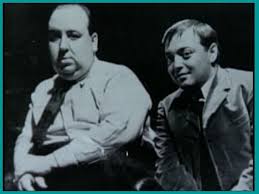
Lorre?s unique onscreen personality and delicacy as an actor could convey menace, madness, homicidal rage, and both sly wit and an extravagant sense of humor, and that was just in the typecast roles. But he knew he could do so much more. And in the rare instances when he got to play outside type, like?Three Strangers,?where he is decidedly offbeat, a gentle, sweet-tempered drunk who gets the girl, he proved he could do just about anything.
Like Fats Waller and Louis Armstrong, Lorre was a great talent who was only partially understood by most of his audience. That is, Fats Waller was such an extraordinary entertainer, such a delightful and fabulous personality, that a lot of audiences probably didn?t notice that he was one of the greatest of stride pianists and a damned good composer. Back when I was growing up in the ?60s, Armstrong was known for ?What a Wonderful World? and ?Hello, Dolly!? rather than his stunning trumpet and vocal work from the ?20s and ?30s. It seems difficult for people to accommodate complexity, and most of the time when they?ve decided who you are, they simply don?t see anything else?they?re blind to it.
I think Lorre was, in this, like Waller and Armstrong?a great artist who is beloved, but only for a fraction of his gift.
If you?re curious about Lorre?s life and work hie yourself to Amazon or B&N or your local bookshop and pick up a copy of Stephen D. Youngkin?s authoritative, exhaustively researched?The Lost One: A Life of Peter Lorre?(University Press of Kentucky). Lorre presents a lot of interesting items for study, but time is short. So we?ll restrict this post to looking at two areas: how his career was shaped and a few ?films in which he played atypical roles that allowed him to showcase the spectrum of his talents, such as?The Mask of Dimitrios, Three Strangers,?and?The Constant Nymph.
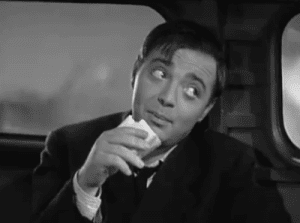
One of Fritz Lang?s goals in?M?was to present the escalating madness and violence, the sense of a society at the edge of disintegration, that he saw in the daily papers. ?Mass murders were occurring with shocking frequency in cities and towns across Germany, horrific crime sprees not by gangsters but by people who seemed utterly ordinary. In Lang?s previous crime films he had depicted master criminals, evil geniuses, but in?M?he made Hans Beckert as ordinary as the killers of the day. Beckert is no antisocial mastermind, he?s a pathetic dweeb?that?s Lang?s and his wife and collaborator Thea von Harbou?s innovation. But casting Lorre as Beckert was essential to the film?s success. From?The Nation?s review: ?[Lorre] gives us an intuition of the conflict of will and desire such as we are accustomed to only in the great classic dramas when they are played by great tragic actors. And in the last scene?his wide-eyed, inarticulate defense is made the equivalent of those passages of rhetoric at the close of Greek or Elizabethan plays in which the hero himself is forced to admit his helplessness before the forces which have undone him. The modern psychopath, through Peter Lorre?s acting, attains to the dignity of the tragic hero. It does not matter that the forces are no longer on the outside. They are perhaps the more ruthless for being inside him. The?moirae?may be given different names by the doctors, the judges, and the audience, but they have lost none of their ancient inevitability.?
Youngkin says that in that final scene, ?the dialogue itself?does not touch Lorre?s performance, which sealed his fate as an actor. Rawly emotional and physically racking, it is as exhausting to watch as it was to give. ?If I play a pathological part,? Lorre later admitted, ?I put myself into this character until I begin to display his symptoms.? He sweats, screams, pants, pleads, and squeals. His eyes bulge, his fingers clench, and his voice pitches toward an ecstatic frenzy.? Lang, famously autocratic on the set, shot that final scene in a marathon that began at 10 a.m. and finally ended at 1 a.m. after Lorre had actually fainted?the director finally had what he wanted, and he used the shot of Lorre?s collapse.
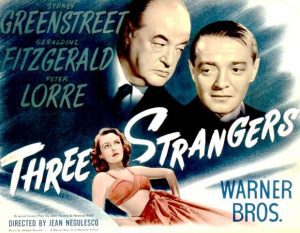
Such a tour de force debut is as often a curse as a blessing. Brilliant debuts not only create inflated expectations, they create a demand for more of the same. For writers, musicians, actors, painters?the more clearly defined you are in an audience?s mind, the less likely you?ll get a chance to branch out, try something new. The money guys don?t like to gamble: If you succeed as a mug, you?re probably going to play a lot of mugs (ask Cagney). And if you get pigeonholed just out of the gate, before you have a chance to get to know the industry and chart a course that?s consistent with what you want and can do, you may get swept along in the current and end up with a one-way ticket to Poverty Row? Stories like Myrna Loy?s, in which she managed to transition from playing exotic yellowface and bad-girl roles (Fu Manchu?s daughter) to playing impeccably respectable but still sexy (Nora Charles) are very rare.
In contrast to Lorre?s career-defining debut, Bogart?s career benefited from growing slowly through a series of appearances in films throughout the ?30s. He mostly (but not always) played bad guys, but even leading roles as villains in?The Petrified Forest?and?High Sierra?somehow didn?t fix him so firmly in the minds of the studio bosses that he couldn?t get a shot at playing Sam Spade. Audiences were familiar with him but not so much that they wouldn?t accept him in the part.
The Maltese Falcon?may not have broken the bonds of Lorre?s typecasting, but it did rescue him from the downward spiral that typecasting creates?studios refuse to cast you outside your designated type, then grow stale on the type and refuse to cast you at all. Warner Bros. was not much interested in Lorre, but John Huston was: ?Peter just seemed to me to be ideal for the part?. He had that international air about him. You never knew quite where he was from, although one did of course?. He had that clear combination of braininess and real innocence, and sophistication. You see that onscreen always. He?s always doing two things at the same time, thinking one thing and saying something else. And that?s when he?s at his best.?
Huston also noted that some of Lorre?s finest touches were not apparent when they were shooting: ?I?d often shoot a scene with Peter and find it quite satisfactory, nothing more?. But then I would see it on the screen in rushes and discover it to be far better than what I had perceived on the set. Some subtlety of expression was seen by the camera and recorded by the microphone that the naked eye and ear didn?t get. He?d be doing little things that the camera close on him would pick up that standing a few feet away you wouldn?t see. It was underplaying; it was a play that you would see if you were close to him, as a close-up, as a camera is close. Things would flicker there and burn up slightly, like a lamp, and then dim down, and come on again. You?re watching something as if it were in motion.?
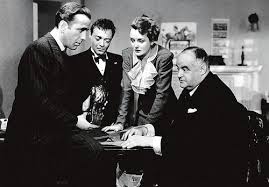
Lorre said in 1962 that making?Maltese Falcon?was one of his happiest times, and that for years after, ?we used to have a sort of stock company, an ensemble?It was a ball team?Each one of those people, whether it was Claude Rains or Sydney Greenstreet or Bogart, or so on, there is one quality about them in common that is quite hard to come by: You can?t teach it and that is to switch an audience from laughter to seriousness. We can do it at will, most people can?t.?
The Maltese Falcon?also brought together the 37-year-old Lorre, a screen veteran, with 61-year-old stage actor Sydney Greenstreet in his first movie. Joel Cairo and Caspar Gutman don?t have a very substantial relationship, but there was an inevitability to the meeting and subsequent pairing of the two. They complemented each other so perfectly?Greenstreet?s girth and Lorre?s slight physique; Greenstreet?s rich, low purr and Lorre?s thinner nasal whine? Lorre drove Greenstreet around the bend on the set, having none of Greenstreet?s serious, detail-oriented professionalism. But when the cameras rolled it always turned out that Lorre had been yanking Greenstreet?s chain (he could never resist) and that Lorre knew the script backward and upside down.

I?m particularly fond of?The Mask of Dimitrios?(1944), adapted from Eric Ambler?s novel. As directed by Jean Negulesco, it is a tricky little noir thriller that starts in Istanbul and ends in Paris with several stops along the way (at least one in one of the multiple flashbacks). I like Lorre as Leyden, the Dutch mystery writer who becomes obsessed with the story of Dimitrios Makropoulos, a criminal whose ruthlessness and sheer nerve makes him seem a natural subject for Leyden?s next book. Greenstreet appears out of nowhere, looking to confirm Dimitrios?s death, and cultivates Leyden?s friendship by searching his room and pulling a gun on him. As Peterson (Greenstreet) often observes, ?How little kindness there is in the world today?? It?s true the film occasionally loses its momentum in long dialogue scenes, but since all of them involve Lorre I?m happy, and as the film goes on Lorre and Greenstreet spend more and more time together, things just get better and better. Lorre functions as the audience, listening to the pieces of Dimitrios?s exploits and the wreckage left in his wake. Youngkin finds him wooden in this; I find him natural and reassuring?I would tell him anything.
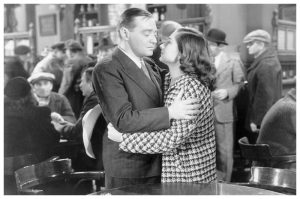
And then there?s?Three Strangers?(1945), from a story by John Huston, also directed by Negulesco. Lorre saw it as an opportunity to play a romantic lead, and for once the studio let him have his way. He plays Johnny West, a petty thief and drunk with a gentle soul. The other two strangers, Geraldine Fitzgerald and Greenstreet, have stories of their own, all anchored by shared ownership of a sweepstakes ticket and an oath to a Chinese statue that is supposed to bring them what they desire. Fitzgerald is a respectable-looking horror, desperate and deceitful, manipulative and utterly solipsistic, and Greenstreet is a respectable-looking embezzler, as bad a lot as Fitzgerald. Only Lorre, the criminal and drunk, has any honor or decency. A nice girl falls for Johnny and moves heaven and earth to save him from the doom that seems to have been made just for him.
One more, though Lorre?s part mostly ended up on the cutting-room floor:?The Constant Nymph(1943). This is one of my favorite movies these days. It has a hyper-romanticism that reminds me of my beloved Frank Borzage. The whole cast is fine, from stars Charles Boyer, Joan Fontaine, and Alexis Smith down to supporting cast including Dame May Whitty, Charles Coburn, and Lorre. Lorre?s Fritz doesn?t have much screen time but as always he finds exactly the right tone for the piece. You always enjoy his presence but he doesn?t suck all the air out of the room, chew scenery, or otherwise hog bandwidth.

Films like this demonstrate what Lorre could do when he was allowed out of his dungeon. Don?t get me wrong?the madmen and fiends he gave us are among the most memorable we will ever see, and that?s fine. But I can?t shake a sense of melancholy for him, imagining his frustration and sense of waste. Lorre left us an interesting catalogue of work, but I always wonder what we missed, what we might be talking about right now in a parallel universe where Lorre had been able to maneuver more easily in the studios. Perhaps he would have made disastrous choices? who knows?
It?s a mystery.
Note:
Quotations are from?The Lost One: A Life of Peter Lorre, by Stephen D. Youngkin. Buy a copy; it?s really good.
Also,?The Films of Peter Lorre,?by Stephen D. Youngkin, James Bigwood, and Ramond Cabana Jr., is a good resource, as is, to a lesser degree,?Masters of Menace: Greenstreet and Lorre,?by Ted Sennett

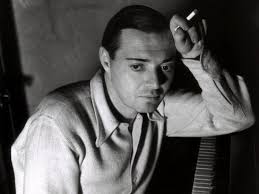

Thanks so much for this great piece on one of my personal favorites, Peter Lorre! He was SO versatile that he is still underrated. I too love The Mask of Demitrios and Three Strangers (here’s my post on it:http://www.lindajsandahl.net/2017/04/outsider-love-peter-lorre-in-three.html), but I also treasure his Dr. Einstein in Arsenic and Old Lace — especially his exit! Another one that he has room to be impressive in (and is not a bad guy) is the musical remake of Pepe Le Moko, Casbah, 1948, with Tony Martin, which is quite good, oddly enough.
Peter Lorre was a fine underrated actor who could’ve done anything. It’s too bad that Hollywood didn’t really make such good use of his talents. He never,alas, received an Oscar. But like Edward g Robinson, Cary grant, his memory will outlast quite a few of those who do